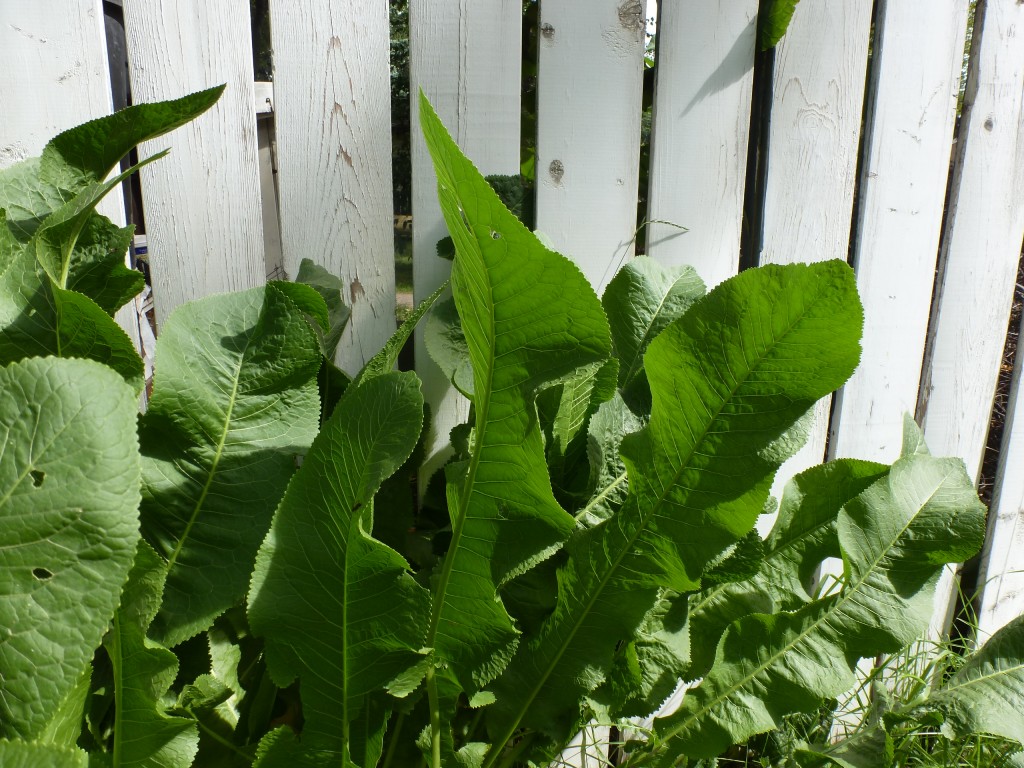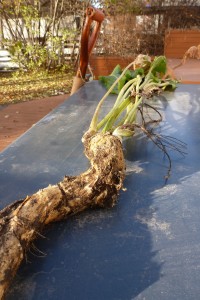Horseradish is a hearty plant; it can flourish almost anywhere in our fair city. I remember when I was in culinary school I would catch a bus at the intersection of 118 Avenue and 106 Street, and there was a perfectly healthy horseradish plant living in a crack in the sidewalk.
Horseradish could in fact be described as invasive. It doesn’t spread too fast, but once it’s established, it’s nearly impossible to remove. I hack enormous chunks out of the root system of my plant and it always recovers.
The root has a pungent flavour very similar flavour to its relatives mustard and wasabi. (Actually most of the “wasabi” that you’ve eaten with your sushi is actually just horseradish powder dyed green.[1]) It can be finely grated and eaten raw for delicious, mustardy pangs of flavour. I first saw this way of serving horseradish in Austria, where they grate fresh horseradish into a snowy heap to accompany boiled beef and cured pork. Before that I was only familiar with prepared horseradish, which is grated horseradish that has been treated with vinegar and jarred.
Horseradish, like mustard, only develops its hot pungency once its cell walls are ruptured by grating or crushing, at which time an enzyme liberates the irritant molecule. Acid slows the enzymes and to a certain extent and “sets” the pungency, so the longer you wait to add vinegar after grating horseradish, the hotter your preparation will be.
I mix roughly one part each of grated horseradish and cider vinegar by weight, then add a bit of salt and white sugar. This mixture stores well in the fridge, though it will slowly discolour and turn grey without the addition of preservatives.
As an aside, the leaves of the horseradish plant are also delicious. They have the same sharp flavour as the root. They are best enjoyed in spring, as they get tough and fibrous later in the year.

Sources
1. This according to Harold McGee in On Food and Cooking. Page 417 of the first Scribner revised edition 2004.

